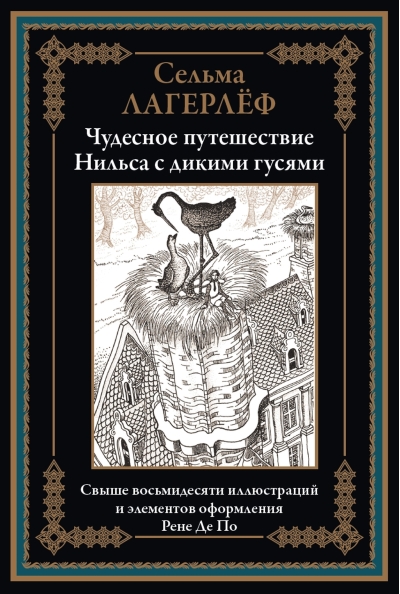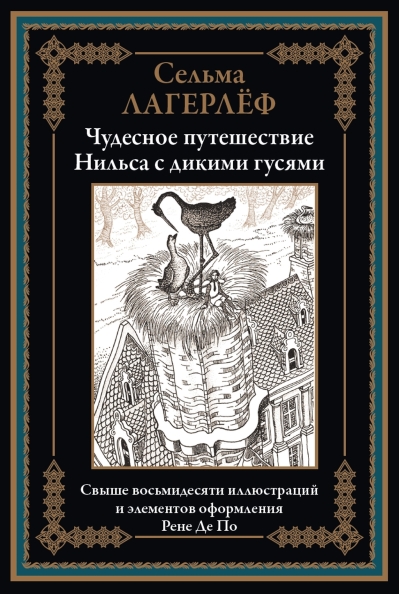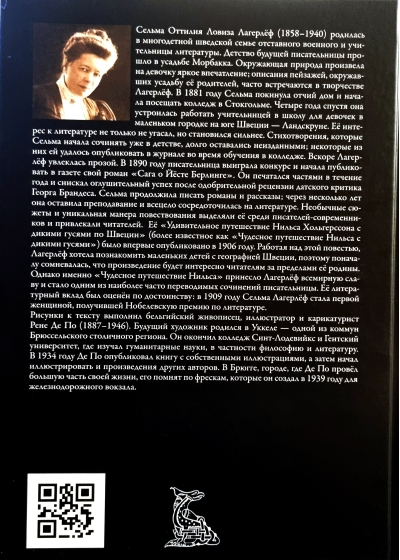The Wonderful Adventures of Nils with the Wild Geese
14.99 €
The only thing available 2
Selma Ottilia Lovisa Lagerlöf (1858–1940) was born into a large Swedish family of a retired military man and a literature teacher. The future writer spent her childhood on the Morbacka estate. The surrounding nature made a vivid impression on the girl; descriptions of the landscapes surrounding her parents' estate are often found in Lagerlöf's works. In 1881, Selma left her parental home and began attending college in Stockholm. Four years later, she got a job as a teacher at a girls' school in a small town in southern Sweden, Landskrona. Her interest in literature not only did not fade, but grew stronger. The poems that Selma began writing as a child remained unpublished for a long time; she managed to publish some of them in a magazine while studying at college. Soon, Lagerlöf became interested in prose. In 1890, the writer won a competition and began publishing her novel, The Saga of Gösta Berling, in a newspaper. It was published in parts over the course of a year and achieved resounding success after receiving a favorable review from the Danish critic Georg Brandes. Selma continued to write novels and short stories; after a few years, she left teaching and focused entirely on literature. Her unusual plots and unique narrative style set her apart from her contemporary writers and attracted readers. Her The Wonderful Adventures of Nils Holgersson in Sweden (better known as The Wonderful Adventures of Nils) was first published in 1906. In writing the story, Lagerlöf wanted to introduce young children to the geography of Sweden, so she was initially skeptical that the work would be of interest to readers outside her homeland. However, it was The Wonderful Voyage of Nils that brought Lagerlöf worldwide fame and became one of the most frequently translated works of the writer. Her literary contribution was duly appreciated: in 1909, Selma Lagerlöf became the first woman to receive the Nobel Prize in Literature.
The illustrations for the text were made by the Belgian painter, illustrator and caricaturist René De Pauw (1887–1946). The future artist was born in Uccle, one of the communes of the Brussels-Capital Region. He graduated from the Sint-Lodewijk College and the University of Ghent, where he studied humanities, in particular philosophy and literature. In 1934, De Pauw published a book with his own illustrations, and then began illustrating the works of other authors. In Bruges, the city where De Pauw spent most of his life, he is remembered for the frescoes he created for the railway station in 1939.
The illustrations for the text were made by the Belgian painter, illustrator and caricaturist René De Pauw (1887–1946). The future artist was born in Uccle, one of the communes of the Brussels-Capital Region. He graduated from the Sint-Lodewijk College and the University of Ghent, where he studied humanities, in particular philosophy and literature. In 1934, De Pauw published a book with his own illustrations, and then began illustrating the works of other authors. In Bruges, the city where De Pauw spent most of his life, he is remembered for the frescoes he created for the railway station in 1939.
See also:
- All books by the publisher
- All books by the author
- All books in the series Library of World Literature























